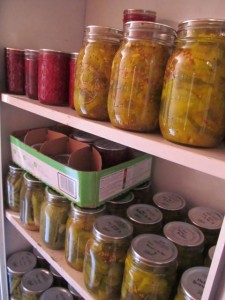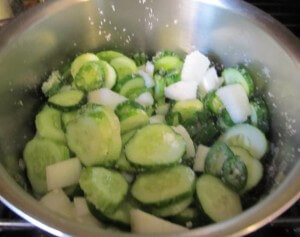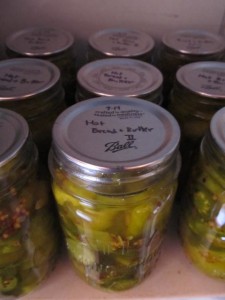by Sara Barry | Oct 22, 2014 | abundance, cooking, fall, grief, use what you have, what's for dinner, writing
Some people waste away when under stress or grieving.
I eat.
When my son was in the hospital, I ate cookies and candy because I had them, big, heavy restaurant-sized meals. I ate whatever plate or dinner people brought me. It didn’t matter how hungry I was or if it was what I wanted (don’t get me wrong, people brought us good stuff); I just ate.
But after he died, when I was home, I cooked.
I made soups and stews, mac and cheese, scalloped potatoes, chicken pot pie. I sautéed greens that I got at the farmer’s market. I toasted bread from the bakery, rubbed it with garlic, drizzled it with olive oil, sprinkled coarse salt.
Maybe I was trying to satiate a hunger not related to food. Maybe I just needed food from home after not being there for three months. Maybe the rhythm of the kitchen soothed me, kept me busy enough without requiring too much thought or energy.
I cooked and I ate, and although the grocery store was a gauntlet of anxiety—ignore the birthday cakes, don’t go down the baby aisle, hold your breath hoping the cashier won’t ask anything about kids—I shopped for food. I went to farmers markets. I paid more for cheese than I should have. I got a farm share of meat and bought local eggs and honey.
I hadn’t worked for almost seven months and was limping along trying to get my sluggish brain to function enough to get through the projects that fell on my desk. B. was going to quit his job come fall to go back to school. I had no business spending extra money on food, and months later when B. actually did quit his job and I readied for another self-paid maternity leave, I gave up the farm share, started buying conventional eggs more and more, cut back on the cheese.
But still I cooked. Still I ate well, and I still took comfort in food.
These days, I still cook, still like to choose good food, still like to do something with the veggies I bring in from the garden. Though with little ones pouting, “I won’t eat that” without even trying it, some days I want to go on a hunger strike, holding out on making food until they are hungry enough to eat whatever it is.
Last night I made potato leek soup with potatoes and onions and carrot and herbs from our garden. I served it with garlic toast with cheese. We started dinner with two whines, but eventually one ate the soup and one at the grilled cheese (it worked better when we put the toast together and called it that). I sat back and enjoyed both.
It was a chilly day, and soup was comforting and warm as the darkness gathered. Comfort food isn’t just for hard times; sometimes we just need to feel cozy at home.
What’s your favorite comfort food?
Potato Leek Soup
olive oil or butter
1 stalk celery, diced
1 large carrot (or equivalent), chopped in half rounds (or quarters if the carrot is fat)
1 ½ cups chopped leeks* (approximate)
salt and pepper
2 quarts broth **
5 medium potatoes, peeled and diced
2 sprigs rosemary
2 sprigs thyme
1 bay leaf
large splash heavy cream (optional, but recommended)
- Sauté the carrots, celery, and leeks until softened. Sprinkle with salt and pepper.
- Add the broth, potatoes, and herbs. Bring to just a boil and lower the heat. Simmer for a long time until the potatoes start to break down.
- Look at your soup and debate whether to bother puréeing it. Take a taste. Wonder if you should add milk like you usually do. Take a Facebook poll.
- Use an immersion blender to smooth out the soup, leaving some small chunks. Taste again. Add a hefty splash of heavy cream if you have it.
- Serve with garlic toast, cheesy or not, and hope your kids will eat it without too much of a stink.
Notes
* I actually used Egyptian walking onions in this version. I included any green parts that looked vibrant. They fade as they cook, but still taste good.
** I used homemade chicken broth this time, because I happened to have it in my fridge and wasn’t in the mood for chicken soup, but I’ve made great soup with canned/boxed chicken or vegetable broth. I went heavier on the salt because I knew my base was lower in sodium.
by Sara Barry | Oct 17, 2014 | abundance, cooking, fall, use what you have, what's for dinner
It’s Harvest Feast night at my kids’ school.
Families bring food pot luck, and each class makes a food based on what they grew in the school garden. I’ve helped my girls’ classes make jam and thumbprint cookies and soup.
Our family is bringing this squash mac and cheese to the potluck. It’s one of my favorite fall foods. The squash adds fiber and a little sweetness. I’ve this from adapted from Elie Krieger’s recipe.
Squash Mac & Cheese
1 lb macaroni (I used a slightly smaller box)
1 quart cooked squash* (2 10-oz packages frozen)
2 cups milk
8 oz grated cheddar cheese (or other sharp cheeses)1/2 tsp. salt
1 tsp. powdered mustard
dash cayenne
1/4 cup plain bread crumbs
2 Tbsp grated Parmesan cheese
1 Tbsp olive oil
- Preheat the oven to 375 degrees F.
- Cook the macaroni and drain well. Pour into a buttered 9 x 13 baking dish.
- In the meantime, heat the squash and milk together until it starts bubbling. Stir frequently to prevent sticking. If your squash was not pureed previously, you may want to use an immersion blender at this point to smooth out the sauce.
- Stir in the salt, mustard, and cayenne.
- Add the cheddar cheese and stir until just melted in.
- Pour the cheese mixture over the macaroni, stirring to make sure the sauce spreads over all the noodles.
- Mix the bread crumbs, Parmesan, and olive oil together. Sprinkle over the macaroni.
- Bake for about 20–25 minutes.
Sometimes I add a meat like ham and/or other veggies like peas, broccoli, or kale to make it a more complete part of dinner.
* I cut my squash in half and place cut side down in a baking dish. I add about an inch of water and bake at 350 degrees F until the squash is soft. After it cools, remove seeds and scrape the squash flesh out of the skin. (You can simmer the seeds and skin to make a mild vegetable broth if you wish).
by Sara Barry | Jul 29, 2014 | cooking, summer, use what you have
My weekend canning sessions were inspired by using what we had on hand. Cucumbers weren’t part  of the plan, nor were jalapenos, but we had lots so we canned them.
of the plan, nor were jalapenos, but we had lots so we canned them.
This ice cream was inspired by raspberries I picked last week. I froze three quarts of berries, but I kept some in the fridge to eat fresh. We did eat some, but the rest were sitting there getting mushy and juicy and begging to be used.
When I started making this ice cream, I remembered why I rarely make chocolate ice cream. You need to melt the chocolate and then let it cool completely before making the ice cream. It takes and extra half hour to an hour, but it’s worth it. Plan on starting about 4 hours before you want to eat ice cream (though if you eat it right out of the ice cream maker before it really “sets” it’s really good that way too). When it comes to bowl or spoon licking, I usually let me kids do a lot of the licking, but I made sure I got my fair share on this one.
Chocolate Raspberry Ice Cream
(makes about 5 cups)
½ cup 1% milk + ½ cup half and half (or 1 cup whole milk)
8 oz bittersweet chocolate, roughly chopped
½ cup sugar (scant)
2 cups heavy cream
½ cup mushy or mashed raspberries sprinkled lightly with sugar
- Pulse the chocolate and sugar in a food processor until chocolate is very small.
- Heat the milk and half and half in a small heavy bottomed sauce pan until it just starts to bubble at the edges.
- Remove from heat and add chocolate. Stir until chocolate melts and mixture is smooth. Pour into a 2-quart or larger mixing bowl. (An 8-cup liquid measure or a large batter bowl work well). Chill.
- Stir the heavy cream into the chocolate mixture. Pour into your ice cream maker, following instructions.
- About 5 minutes before the ice cream is done (about 25 minutes in my machine), add the raspberries. Let the machine run for 5 minutes more. Transfer the ice cream to a covered container and let set for about 2 hours.
Go make some ice cream—or at least eat some!
by Sara Barry | Jul 28, 2014 | canning, kids in the kitchen, summer, use what you have
I had an eight-hour canning extravaganza on Saturday, which felt utterly productive.
I knew I was in for dilly beans and raspberry jam and raspberry chocolate liqueur sauce, but when I showed up at my friend Kath’s house she had a colander full of cucumbers too. Always game, I asked, “Dill or bread & butter?”
Since the dill pickles we like need to sit for at least 12 hours (and I wasn’t planning on staying quite that long), we decided on bread & butter. But there were all those jalapenos. Our first batch of spicy bread & butter pickles was born.
When making these pickles, the cucumber, onion, and peppers sit in a salt brine for two hours before you cook and can them, so we started the process and then went to pick raspberries. We came in got our jars heating, had lunch, and got canning.
We had a not quite full small jar to wrap up our batch of pickles, so after it cooled a bit, we stuck it in the fridge. We usually end our canning days with ice cream, but instead we ended with pickles. They were cold and sweet and spicy all at once. We ate the whole jar standing up and agreed this was a keeper. I liked them so much, I made another batch on Sunday by myself.
In eight hours, we squeezed in
- a batch of hot bread and butter pickles
- a double batch of dilly beans
- a double batch of raspberry jam
- a double batch of raspberry chocolate liqueur sauce (so good on ice cream)*
- a single batch of raspberry-mint-lavender jam (my big girl kept suggesting raspberry mint, so we tried it).
Hot Bread & Butter Pickles
(adapted from The Ball Complete Book of Home Preserving)
10 cups cucumbers sliced into rounds
2 cups onion sliced (I prefer thick slices)
2 cups sliced jalapenos (we kept the seeds in)
½ cup pickling salt or Kosher salt
3 cups white vinegar
1 tsp turmeric
1 tsp celery seeds
2 Tbsp mustard seeds (we use mix of yellow and brown)
2 tsp pickling spice
- Mix the pickles, onions, and peppers with salt and cover with cold water. Let sit for 2 hours.
- Prepare 6 pint jars for canning: wash jars and bands in hot soapy water, rinse, and put into a filled canning pot. This recipe should make 5 pints, but I’ve learned to always put an extra jar the same size or smaller in the canner, just in case. Put the flat lids in a heat-proof bowl. Get your canning station set up: layout a towel on the table or counter. Get your ladle, funnel, tongs, slotted spoon, and a wet paper towel or clean rag ready.
- Go pick raspberries, have lunch, read to your kids, or whatever you like until the two hours is up.
- Start heating the canning pot.
- Mix the vinegar and spices together in a large pot. Bring to a boil. While that’s heating, dump the vegetables into a colander and rinse under cold running water.
- As soon as the vinegar mixture begins to boil, add the vegetables. Again bring just to a boil. Turn off the heat.
- Remove jars from the canning pot. Ladle water from the canning pot over the flat lids.
- Spoon the veggies into the hot jars, packing fairly tightly. Ladle the vinegar brine into the jars, leaving ½ inch headspace.
 Wipe the rims of the jars clean. Place a lid on each jar and screw on the band.
Wipe the rims of the jars clean. Place a lid on each jar and screw on the band.- Put the filled jars back in the canning pot. Cover and bring the water to a boil. Once it reaches a boil process for 10 minutes (adjust for altitude if necessary).
- Then turn off the heat and removed the cover. Let jars sit for 5 minutes. Remove onto a clean towel. Wait for the delightful ping of the jars sealing. If one doesn’t seal, stick it in the fridge to enjoy now.
* If raspberry chocolate liqueur sauce sounds good, look for Sundae in a Jar in The Ball Complete Book of Home Preserving. We replace the strawberries with raspberries.




 Wipe the rims of the jars clean. Place a lid on each jar and screw on the band.
Wipe the rims of the jars clean. Place a lid on each jar and screw on the band.